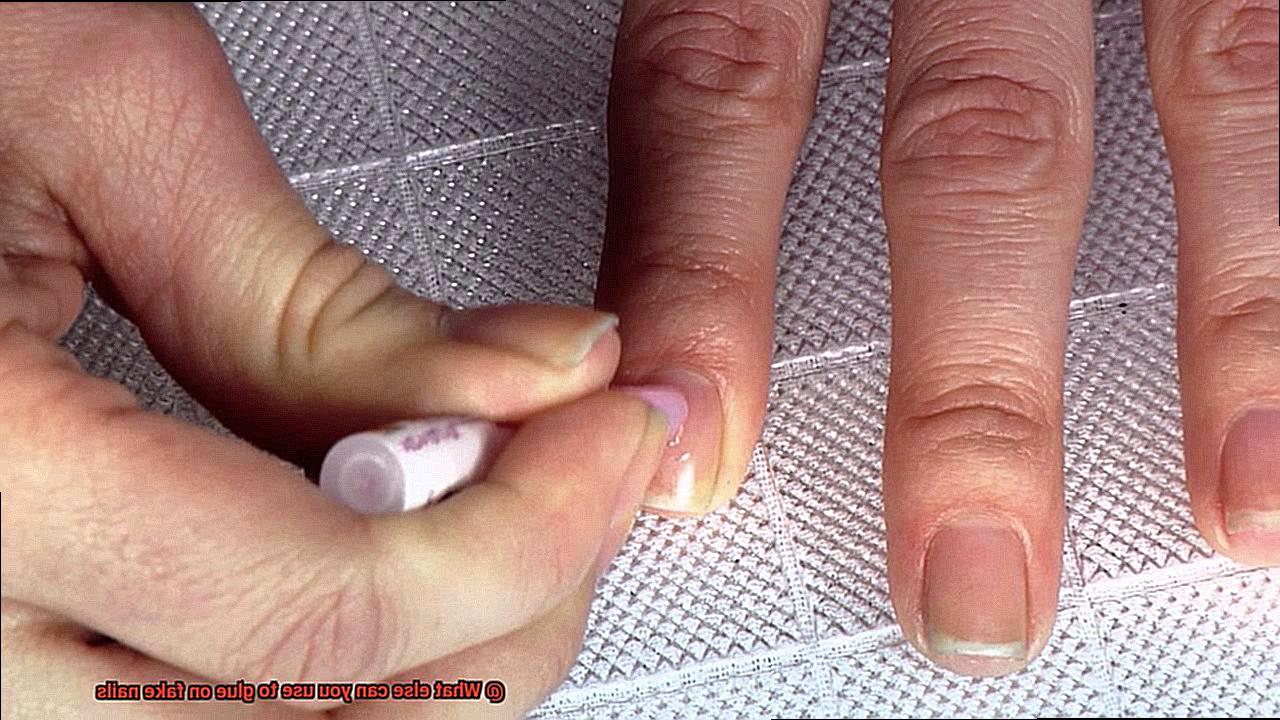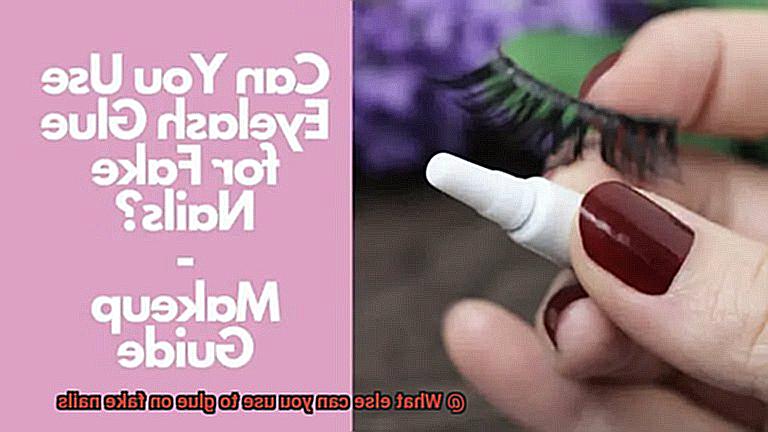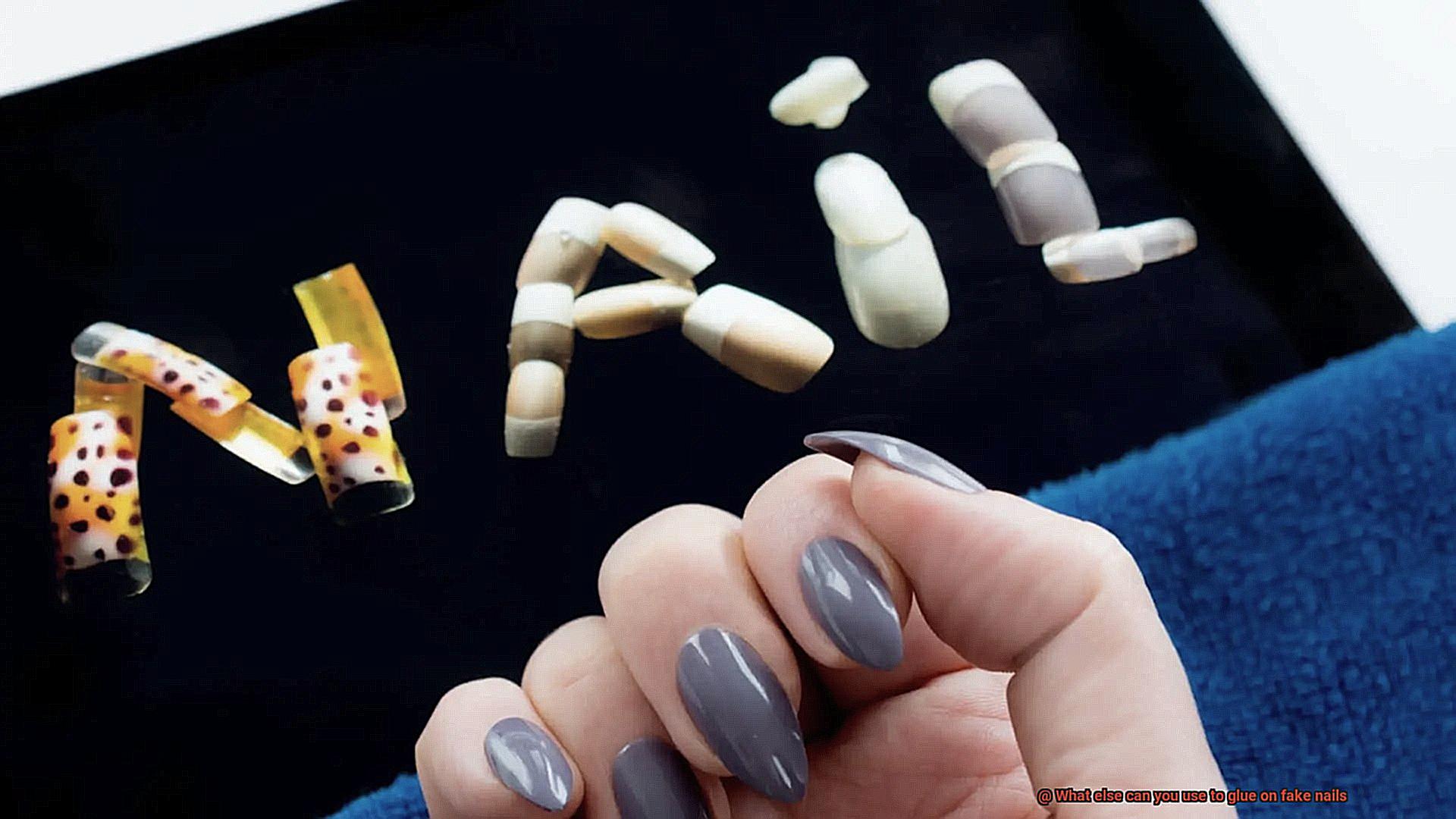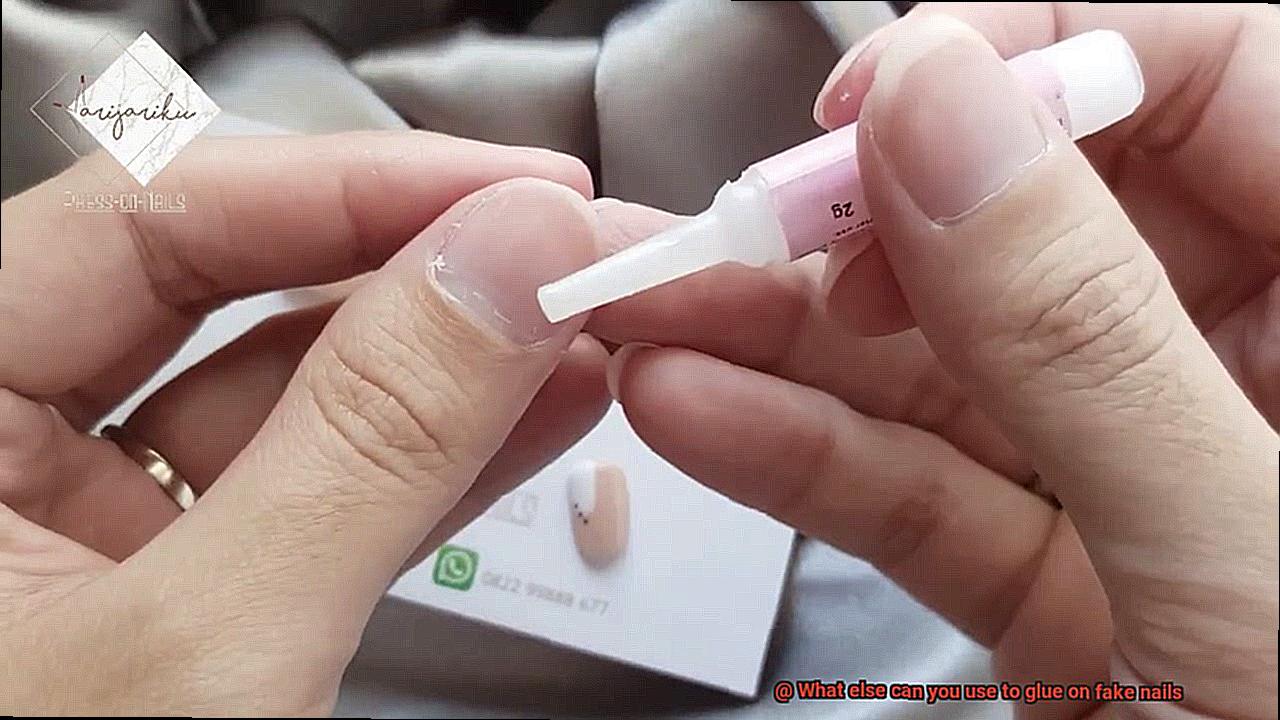Are you tired of the same old nail glue routine, only to end up with popped-off nails at the most inconvenient times? Whether you’re a die-hard nail art lover or just want to add some flair to your fingertips, we’ve got exciting news for you: There’s a whole world of alternative methods to secure those stunning fake nails.
In this blog post, we’re shaking things up and leaving traditional nail glue behind. We’re diving headfirst into an array of inventive ways to attach fake nails. From tried-and-true techniques to clever hacks, we’ll explore various options that might just revolutionize your nail game. Because let’s be real – life is too short to spend worrying about lost acrylics.
But before we embark on this manicure adventure, it’s crucial to weigh the pros and cons of each approach. While alternative methods may offer benefits like enhanced durability or easier removal, they may also come with their fair share of drawbacks. Don’t worry though; we’ll examine them all so that you can make an informed decision based on your unique nail needs.
So, whether you crave a long-lasting solution, have sensitive skin that doesn’t get along with traditional adhesives, or simply want to experiment with unconventional techniques – fear not. We’ve got you covered every step of the way. Along our journey, we’ll share expert insights and insider tips and tricks to help you achieve jaw-dropping results without sacrificing style or convenience.
Ready to dive into a world beyond glue? Let’s embark on an exploration of innovative ways to securely flaunt your fake nails and unlock endless possibilities for your fingertips. Get ready for hidden gems and delightful surprises as we embark on this thrilling nail journey together.
What is Nail Glue?
Contents
- 1 What is Nail Glue?
- 2 Alternative Options to Nail Glue
- 3 Clear-Drying, Non-Toxic Craft Glue
- 4 Double-Sided Adhesive Tabs or Nail Stickers
- 5 Eyelash Glue as an Alternative
- 6 Using Super Glue or Other Strong Adhesives
- 7 Prioritizing the Health and Safety of Your Nails
- 8 Considerations When Choosing an Alternative to Nail Glue
- 9 Conclusion
Nail glue is a specialized adhesive designed specifically for attaching artificial nails, also known as fake nails or nail extensions, to natural nails. Its purpose is to create a firm and durable bond between the artificial and natural nails, ensuring that the nail extension stays in place for an extended period of time.
This powerful adhesive comes in small bottles with a narrow nozzle, allowing for precise application. It should only be used for attaching artificial nails and not for any other purposes, as using it on other surfaces or body parts can lead to damage or injury.
The main ingredient in nail glue is cyanoacrylate, an incredibly strong and fast-drying adhesive. When cyanoacrylate comes into contact with moisture, such as the natural oils on the nail surface, it forms a chemical bond that quickly hardens, securely attaching the artificial nail to the natural nail.
One of the key features of nail glue is its resistance to water. This means that even when exposed to moisture from activities like handwashing or showering, the bond remains intact, ensuring that the artificial nails stay securely in place.
However, it is important to handle nail glue with caution. Direct contact with skin or eyes can cause irritation, burns, or allergic reactions. It is recommended to use nail glue in a well-ventilated area and avoid contact with sensitive areas of the body.
Alternative Options to Nail Glue
I have compiled a list of alternative options that will keep your fake nails in place without the usual sticky mess. So, let’s dive in and explore these fantastic alternatives.
- Double-sided adhesive tape: Designed specifically for securing fake nails, this tape packs a serious punch in terms of holding power. Simply cut a piece to fit your nail, peel off the backing, and press it onto your natural nail. Then, gently press your fake nail onto the tape for a strong and long-lasting hold.
- Nail adhesive tabs: These tiny superheroes for your nails provide a temporary hold that can be easily removed without any damage. Just apply them onto the back of your fake nails and press them onto your natural nails. Perfect for those who love to switch up their style frequently.
- Liquid bandage or liquid bandage glue: While typically used for wound care, these products work surprisingly well for securing fake nails. They create a strong bond and are even waterproof, ensuring your fabulous nails stay put for longer.
- Nail adhesive powders: If you’re after something more durable, this option is for you. Apply a sticky base coat to your natural nails, dip them into the adhesive powder, and press on your fake nails. Cure the powder under a UV or LED lamp for a bond that lasts for weeks.
- Clear nail polish: In a pinch, clear nail polish can temporarily secure your fake nails until you can get proper glue. While it may not provide the strongest hold, it can do the job temporarily.
- Denture adhesive: Yes, you heard me right. Denture adhesive isn’t just for keeping your pearly whites in place; it can also work wonders for securing fake nails. Just be cautious and read the instructions carefully to avoid discomfort.

Clear-Drying, Non-Toxic Craft Glue
Clear-drying, non-toxic craft glue is a versatile and essential tool for crafters of all kinds. This type of glue is designed to dry clear, ensuring a seamless and natural appearance once it sets. Whether you’re attaching fake nails, creating jewelry, or working on other craft projects, clear-drying craft glue provides a strong and reliable bond.
One of the key benefits of clear-drying craft glue is its strong adhesive properties. Craft glues are formulated to bond different materials together, making them suitable for a wide range of crafting applications. When used to attach fake nails, clear-drying craft glue provides a secure bond that keeps the nails in place. It’s important to apply a thin layer of glue to both the natural nail bed and the back of the fake nail for optimal results.
In addition to its adhesive qualities, clear-drying craft glue is also formulated to be safe for skin contact. This is particularly important when using glue near the nail bed, as it minimizes the risk of skin irritation or allergic reactions. Non-toxic craft glues are specifically designed with safety in mind, so you can use them with confidence.
Clear-drying craft glue is easily accessible and affordable. You can find it in most arts and crafts stores or online retailers. It typically comes in various sizes, allowing you to choose the quantity that suits your needs. Whether you’re working on small-scale projects or larger crafts, there’s a clear-drying craft glue available for you.
While clear-drying craft glue offers many benefits, it’s important to note that its longevity may vary. Factors such as individual body chemistry and daily activities can affect the adhesive bond over time. Regular maintenance and reapplication of the glue may be necessary to ensure the longevity of your project.
It’s also worth mentioning that clear-drying craft glue may not be suitable for all types of fake nails. Some artificial nail products come with their own specialized adhesive, which may provide a stronger and longer-lasting bond. Always follow the manufacturer’s instructions when using specific fake nail products to ensure optimal results.
Double-Sided Adhesive Tabs or Nail Stickers
When it comes to fake nails, there are two popular methods for application: using double-sided adhesive tabs or nail stickers, or using glue. Each method has its advantages and disadvantages, so let’s take a closer look at both options.

Double-sided adhesive tabs or nail stickers offer a convenient and hassle-free way to apply fake nails. They are incredibly easy to use and don’t require any drying time like glue does. Simply peel off the backing of the adhesive tab, press it onto your natural nail, and then press the fake nail onto the adhesive. This makes them ideal for beginners or those who want a quick and temporary nail enhancement.
One of the biggest advantages of using adhesive tabs or stickers is that they are less likely to cause damage to your natural nails. Unlike glue, they can be easily removed without the need for harsh chemicals or acetone. This is particularly beneficial for people with sensitive nails or those who prefer to avoid chemical-based products.
Another benefit of adhesive tabs or stickers is their versatility. They come in various sizes and shapes, allowing you to find the perfect fit for your natural nails. Some brands even offer pre-cut tabs in different designs, making it easier to create unique and eye-catching nail looks.
However, it’s important to note that adhesive tabs may not be as durable as glue. While they can hold fake nails in place for a decent amount of time, they may not last as long as when using traditional glue. They may also be less effective in securing larger or heavier fake nails due to their adhesive strength.
On the other hand, using glue for fake nails offers a stronger and more long-lasting hold. It is specifically formulated for nail applications and can withstand daily activities without nails popping off. Glue is perfect for those who want a more permanent nail enhancement or for special occasions where you need your nails to stay put for an extended period.
However, using glue does have its downsides. It can be messy and tricky to apply, especially for beginners. Additionally, it requires drying time, which can be inconvenient if you’re in a hurry. Some people may also experience allergic reactions or skin irritation from the chemicals in the glue.
In conclusion, the choice between double-sided adhesive tabs or nail stickers versus glue for fake nails ultimately comes down to personal preference and desired outcome. If you want a quick and easy application with minimal damage to your natural nails, adhesive tabs or stickers are an excellent choice. However, if you want a stronger and longer-lasting hold, glue may be the better option.
Eyelash Glue as an Alternative
Eyelash glue can be a game-changer when it comes to attaching fake nails. Here are the benefits of using eyelash glue as an alternative to traditional nail glue:
- Safe and skin-friendly: Eyelash glue is made from a latex-based formula that is safe to use on the skin. This means you can confidently apply fake nails without worrying about any harm or irritation.
- Effortless application: Applying fake nails with eyelash glue is a breeze. Start by thoroughly cleaning and drying your nails. Then, simply apply a thin layer of glue onto your natural nail and firmly press the fake nail onto it. The glue sets quickly, ensuring a strong bond in no time.
- Easy removal: One of the perks of using eyelash glue is its easy removal. Soak your nails in warm soapy water, and watch as the glue softens and allows you to gently peel off the fake nails without causing any damage to your natural ones.
However, it’s important to consider a couple of drawbacks when using eyelash glue for attaching fake nails:

- Less durability: While eyelash glue can provide a temporary hold, it may not be as long-lasting or durable as traditional nail glue. This means that the fake nails might be more prone to lifting or coming off sooner than expected.
- Visible residue: Some eyelash glues, especially those that aren’t clear in color, may leave behind a visible residue on the nails. For those who prefer a clean and polished look, this can be a downside.
Using Super Glue or Other Strong Adhesives
Using super glue or other strong adhesives for various purposes can have both advantages and disadvantages. On one hand, these adhesives offer a quick and secure bond, making them useful for a range of applications. However, they also come with certain drawbacks that should be considered.
One advantage of using super glue or other strong adhesives is their fast-drying nature. This means that once applied, the adhesive sets quickly, allowing for immediate use or further manipulation of the bonded items. Additionally, these adhesives often provide a strong and durable bond, ensuring that the materials stay securely attached.
Furthermore, super glue and other strong adhesives are typically readily available in hardware stores and supermarkets, making them easily accessible for consumers. They are also versatile and can be used on a variety of materials such as plastic, metal, wood, and fabric, expanding their range of applications.
However, there are some disadvantages to consider when using these adhesives. One drawback is that they can be challenging to remove once dried. This can make repairs or adjustments difficult and may require the use of solvents or other specialized methods to dissolve or break the bond.
Another disadvantage is that some strong adhesives emit fumes that can be harmful if inhaled in large quantities or over an extended period. It is important to use these adhesives in well-ventilated areas and take appropriate precautions to avoid breathing in the fumes.
Additionally, these adhesives tend to have a relatively short shelf life once opened, as they can dry out or lose their effectiveness over time. This means that it may be necessary to purchase new adhesive if it has been stored for an extended period.
Prioritizing the Health and Safety of Your Nails
When it comes to applying fake nails, the adhesive you choose can make or break the health and safety of your natural nails. It’s crucial to prioritize the well-being of your nails, and here’s why:
- Potential Risks: Using the wrong glue or adhesive for your nails can expose you to potential risks and dangers. Some adhesives contain harmful chemicals that can irritate or damage your nails, skin, or even your respiratory system if inhaled. Don’t take any chances with your health.
- Choosing the Right Adhesive: To ensure the safety of your nails, it’s essential to select a safe and suitable adhesive for fake nails. Look for adhesives specifically formulated for nail application and avoid those containing harmful chemicals like formaldehyde, toluene, and DBP. Your nails deserve only the best.
- Follow Instructions: Each adhesive has its own set of instructions provided by the manufacturer. Take the time to read and follow them carefully. These instructions will guide you on how to apply, remove, and take safety precautions. Ignoring them could lead to unwanted consequences.
- Nail Preparation: Properly preparing your nails before applying fake ones is key. Start by thoroughly cleaning your nails to remove any dirt or oils that could interfere with the adhesive’s bond. Then, gently file your nails to create a smooth surface that promotes better adhesion. Give your natural nails a clean canvas.
- Potential Damage to Natural Nails: Harsh or incorrect adhesives can wreak havoc on your natural nails. They can weaken them, make them brittle, or even cause fungal infections. Prioritizing nail health will save you from these troubles. Protect what nature has given you.
- Safer Alternatives: If traditional nail glues make you uneasy, fear not. There are safer alternatives available. Nail stickers or press-on nails can be a breeze to use as they don’t require any adhesives. This reduces the risk of damage to your natural nails. Embrace the convenience and safety.
Considerations When Choosing an Alternative to Nail Glue
When choosing an alternative to nail glue, there are several factors to consider that will help you find a safe and effective product. Safety is paramount, so look for alternatives labeled as non-toxic and free from harmful chemicals like formaldehyde and toluene. These ingredients can damage your nails and overall health.
Adhesive strength is another important consideration. You want a product that securely holds fake nails in place. Look for options that mention their strength or durability, and read reviews from other users to gauge their effectiveness.
Consider the application process as well. Some alternatives may have a more complex process, while others are simpler and more user-friendly. Think about whether you’re comfortable using brushes, applicators, or other tools that may be required.
The removal process is equally important. Check if the alternative adhesive offers easy removal without damaging your natural nails. Products that dissolve with water or acetone are often preferable.
Longevity is another factor to think about. How long do you need your fake nails to stay in place? Different products have varying lifespans depending on humidity, moisture exposure, and daily activities. Choose an adhesive that offers the desired level of longevity.
Lastly, consider compatibility with nail materials. Ensure that the alternative adhesive works well with the type of fake nails you’re using—some adhesives may be better suited for acrylic or gel nails, while others work better with press-on nails.
Conclusion
To sum up, there are countless alternatives to the traditional nail glue that can securely attach fake nails. Whether you’re after a temporary fix, a long-lasting hold, or a gentler option for your nails, rest assured there’s something out there for you.
From double-sided adhesive tape and nail adhesive tabs to liquid bandage or liquid bandage glue, nail adhesive powders, clear nail polish, and even denture adhesive – the options are vast. Each alternative has its own pros and cons in terms of durability, ease of application, and removal.
For those seeking versatility with a reliable bond and skin-friendly formula, clear-drying craft glue is an excellent choice. It’s readily available and won’t break the bank, making it a go-to for craft enthusiasts.
Another surprising alternative is eyelash glue. While it may not offer the same level of durability as specialized nail adhesives, it’s easy to apply and remove without causing harm to your skin.
If you’re willing to venture into stronger territory, super glue or other powerful adhesives can be an option. However, be cautious as they can be challenging to remove and emit fumes that may be harmful if used in poorly ventilated areas.
When selecting an alternative adhesive for fake nails, prioritize the health and safety of your natural nails. Take into account potential risks, choose the right product according to your needs, follow instructions diligently, prepare your nails properly before application, avoid damaging your natural nails at all costs – consider exploring safer alternatives like nail stickers or press-on nails.
Ultimately, finding the perfect alternative will depend on personal preference and desired outcome.






